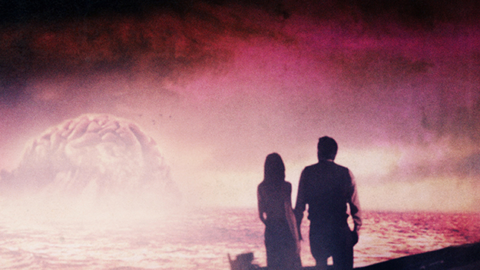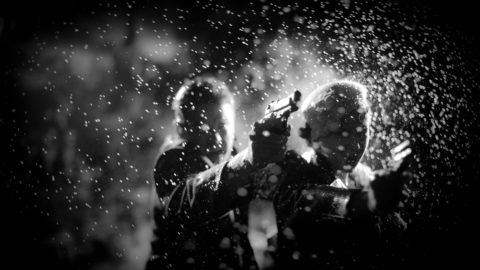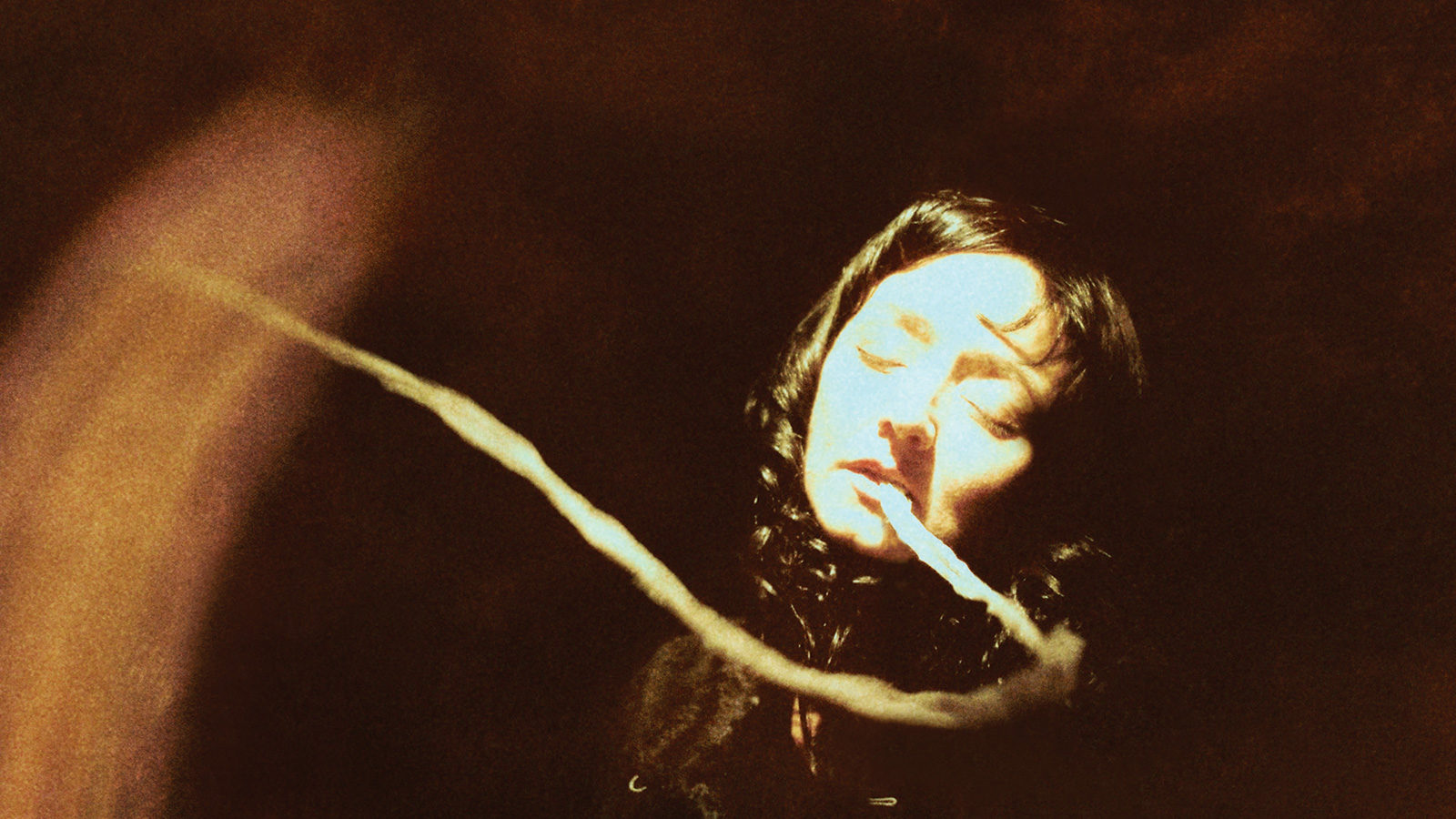
The Infernal, Ecstatic Desire Machine of Guy Maddin
Guy Maddin’s latest creation begins with a bath—and continues as a bath, an immersive plunge into the roiling waters of cinema’s history and its unconscious. Note that I didn’t call The Forbidden Room Maddin’s “latest film,” for this isn’t so much a film as an encyclopedic compendium of cinematic possibilities, a cauldron bubbling over with highly spiced visual and narrative tropes. No apologies for the hyperbolic tone of the above: to wax over-lyrical is simply to enter into the florid, wildly heated spirit of The Forbidden Room. Credited to Maddin as director and Evan Johnson as co-director, this 119-minute marvel is a genuinely experimental experience, at once an imagistic neo-“happening,” a cornucopian overflowing of story, and a materialist rhapsody on the textures of antique film stock—albeit one that happens to have been created 100 percent digitally.
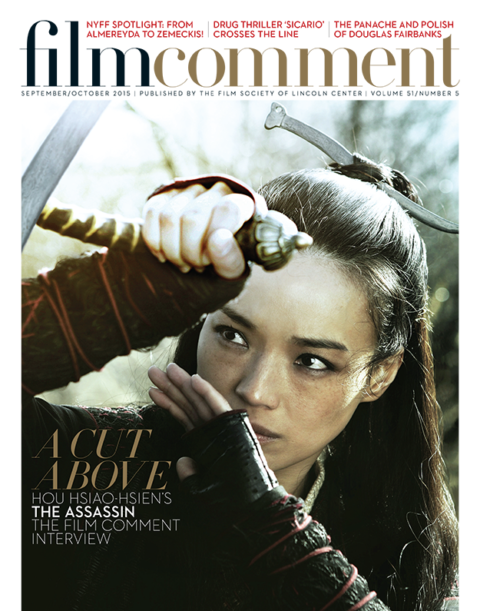
The Forbidden Room might be described as a kind of deconstructed portmanteau movie, with its torrential flow of tenuously linked episodes and fragments. The film begins with a portly, avuncular roué (long-standing Maddin regular Louis Negin) saucily discoursing to camera on the best way to take a bath. When you soap yourself, he advises, start at the armpits and work down to the genital area: “Work carefully in ever-widening circles.” The film too proceeds in widening or possibly ever-narrowing circles, following a concentric structure of tales within tales. The bathwater leads—free-associatively, it seems—to another kind of tub, a submarine. Perhaps the sub is present as a microscopic toy within the bathwater, just as the events in Maddin’s faux-autobiographical melodrama Cowards Bend the Knee (03) apparently take place in a drop of sperm viewed through a microscope in the opening sequence.
The submarine story we now watch is set aboard the SS Plunger—as one of the film’s many intertitles announce—where the small crew is in crisis. The captain is sequestered in his quarters, a cargo of explosive jelly is reacting dangerously to depressurization—“Melting By the Minute!”—and oxygen is running out (fortunately, the men are able to breathe the air contained in bubbles in their daily ration of flapjacks). Suddenly, a man clambers in through a hatch. He’s Cesare (Roy Dupuis), a forester, and he has a story to tell. He’s been magically transported here from “the black heart of Holstein-Schleswig”—in other words, from another movie entirely—where he and his fellow “Saplingjacks” have set out to rescue a sloe-eyed ingénue/vamp named Margot (Clara Furey) from the feared Red Wolves bandit gang. Cesare’s story—which begins in images sprinkled with snow and vignetted in a frosty white border—follows him to the Wolves’ lair, where he must face a series of character-testing ordeals including finger-snapping and offal-piling.
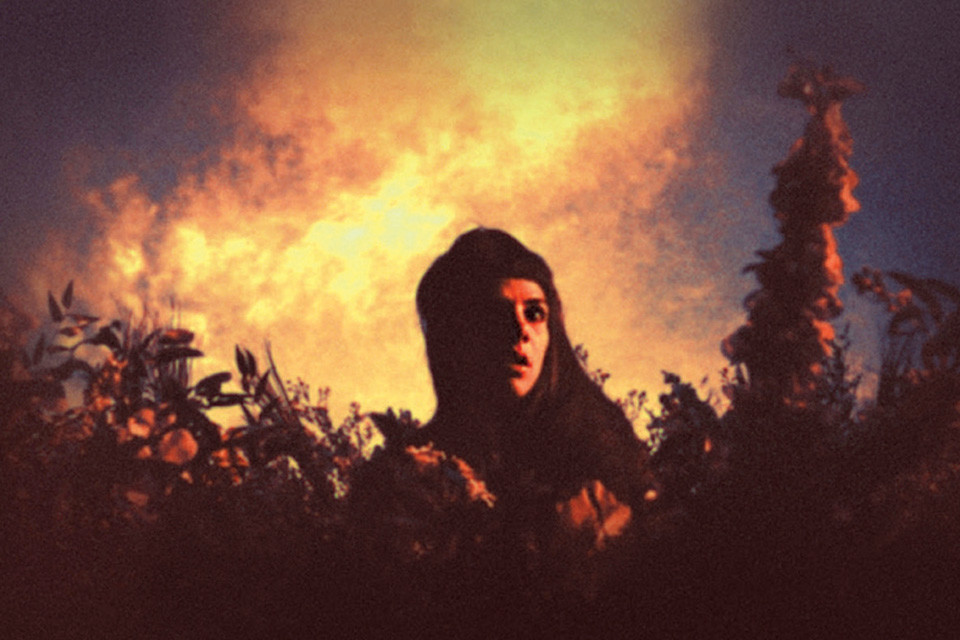
The Forbidden Room
But Margot finds her escape route—into a dream. We follow her, in a new incarnation as an amnesiac flower girl, to a nightclub in some Thirties/Forties–style Hollywood imagining of Bali or thereabouts, where—in a raspy voice and twitching galvanically—she sings about “the Aswang—the jungle vampire.” We soon move on to a tale of volcanoes, jungle tribes, and squid theft (yes, squid theft) in which Margot embarks on a sapphic passion with a stranded attorney—but not before the digression of a song written and performed by indestructible art-pop doyens Sparks. Entitled “The Final Derriere,” it illustrates the story of a man (Udo Kier) who undergoes brain surgery to cure his buttock fixation.
And so on—and on and on—the stream of story flows, like leaking bathwater, or melting jelly, or gushing volcanic magma (lava features heavily both as a narrative and a visual motif). We meet surgeons, charlatans, demimondaines, blind mothers, faithless offspring, even “Skeletal Insurance Defrauders.” The Forbidden Room comprises diverse (complete or partial) stories, countless characters, and a host of actors, some glimpsed only briefly (Charlotte Rampling, Adèle Haenel), others taking multiple roles (Geraldine Chaplin, Mathieu Amalric, Negin, Kier). Sometimes the flow surges relentlessly ahead, sometimes it surprises us by looping back on itself—more than once we find ourselves back in Cesare’s forest, or aboard the sub.
While few films resemble The Forbidden Room’s excessive, barely containable splurge, structurally it bears certain comparisons. It recalls the oneiric liquidity of Buñuel’s The Phantom of Liberty, or the fragmentation of the Monty Python TV episodes. In literary terms, lowering yourself into its abyss is not unlike reading Italo Calvino’s “sampler” of narrative forms, If on a Winter’s Night a Traveler… or penetrating the infinite regress of stories-within-stories of Jan Potocki’s 19th-century nightmare novel The Saragossa Manuscript, memorably filmed in 1965 by Wojciech Has. The mise en abyme structure of The Forbidden Room is specifically indebted to the writings of the obsessively systematic French visionary Raymond Roussel. In particular, the film borrows the structure of Roussel poems such as New Impressions of Africa from 1932, which continually zoom in on details within details of their ostensible subjects, as if heading for a never-reachable final destination in some subatomic dimension.
The Forbidden Room is all the more curious in that it is essentially a sort of by-product—or a parallel project to—another Maddin undertaking. Its material was originally filmed as part of two museum installations, later to be harvested for an online project entitled Seances, to be launched next year. Starting in 2012, for two three-week sessions, Maddin set himself up with crew and revolving cast at Paris’s Pompidou Center (where the project was titled Spiritismes) and the Phi Centre in Montreal, to shoot a short film a day in full view of the public. The “séances” (which in French can simply mean “film screenings”) were intended to raise from oblivion a number of lost films—movies that were made and then disappeared, or that never developed beyond a script or a title, or that were only rumored to exist (for example, the untraceable The Red Wolves, mentioned by the Austrian writer Joseph Roth). The original proposed catalog of Seances included works by famous names (Griffith, Sternberg, Vigo, Dorothy Arzner) and altogether obscure ones, as well as such oddities as an apocryphal film daydreamed by the protagonist of Knut Hamsun’s Hunger, and Maddin’s own unmade Dykemaster’s Daughter (Maddin ended up making 32 films from this potential repertoire). The Forbidden Room is itself named after a lost Allan Dwan drama of 1914.
Each séance attempted to re-create one of these mythical titles, reimagined sometimes from the scantest information, with script input from the poet John Ashbery (although the only section of The Forbidden Room that Ashbery is credited with writing, and the only one filmed before the Seances project began, is the framing “How to Take a Bath,” from a lost Thirties sexploitation film by Dwain Esper). The day I visited the Paris leg of Seances in the Pompidou Center basement, Maddin was appropriately working on a resurrection—Resurrection of Love, a 1923 Mizoguchi melodrama involving a blind potter—and I spotted some footage in The Forbidden Room that must have been filmed that day. Each day’s shooting would begin with a mock séance to invoke the spirit of the movie at hand—the séances involving swathes of ectoplasm (usually netting or cotton floss emerging copiously from an actor’s mouth), just as they do in a particularly delirious sequence of Maddin’s brazenly unreliable “documentary” about his hometown, My Winnipeg (07).
The footage shot for Seances finds its way, repurposed and recontextualized, in The Forbidden Room. A European episode featuring Jacques Nolot as a fugitive murderer started life as Gardener Boy Sought (1913), by Denmark’s George Schnéevoigt. One of the stranger sequences is derived from a 1921 Australian production, Lottie Lyell and Raymond Longford’s The Blue Mountains Mystery. It casts Amalric as a man who, forgetting his wife’s birthday, tries to evade embarrassment by giving her all his possessions, claiming that they are specially acquired duplicates of everything he owns—but then finds himself having to explain why the originals have gone missing. This is one of several sequences in The Forbidden Room that play on a favorite Maddin motif, doubling—whether it’s in the form of the doppelgänger, the duplicated object, or the imposter. Indeed, the Seances films are themselves doubles, or counterfeits, of their models; for that matter, Seances and The Forbidden Room could be seen as doubles, or distorting mirror images of each other.
So what is The Forbidden Room like to watch? It’s instantly recognizable as having Maddin’s idiosyncrasies, consistent right from his first features Tales from the Gimli Hospital (88) and Archangel (90): the exaggerated performance style of the spoken dialogue; the absurd, sometimes innuendo-laden intertitles (“To the warm, pink center of the cave… To Margot!”); the mock-melodramatic narrative content; and the visual style, which pastiches and amplifies (rather than parodies) assorted film styles going back to the silent era, using cheap and cheerful production values, trompe l’oeil effects that don’t aim to fool the eye so much as seduce it (here, plenty of back projection and multi-use props). The traditional tumultuous and tormented sexuality that marks Maddin’s film is there in force, somewhat less homoerotically charged than it often is, but at typical fever pitch.
There’s also the increasingly frenetic editing that properly became a Maddin trademark with his miraculously intense and image-crammed six-minute mash-up of Abel Gance and Russian Constructivism The Heart of the World (00) and his luxuriantly camp short Sissy Boy Slap Party (04). These works, together with the hyper-Freudian fabulation Cowards Bend the Knee—which mixes autobiographical elements such as the Winnipeg hair salon and hockey teams of the director’s youth with the psychosexual misadventures of hero “Guy Maddin”—best sum up his status as a master of what you might call the “Cinema of Agitation.” In The Forbidden Room, this ecstatically edited excitation comes to a head in the discovery of a “Book of Climaxes” that unleashes an orgasmic, quasi-symphonic explosion of possible endings—vampires, hot-air balloons, cliff-hangers, kiss after kiss after kiss—as if we were witnessing the birth of cinema in a Big Bang caused by the apocalyptic collision of Méliès, Feuillade, Jules Verne, and Max Ernst.
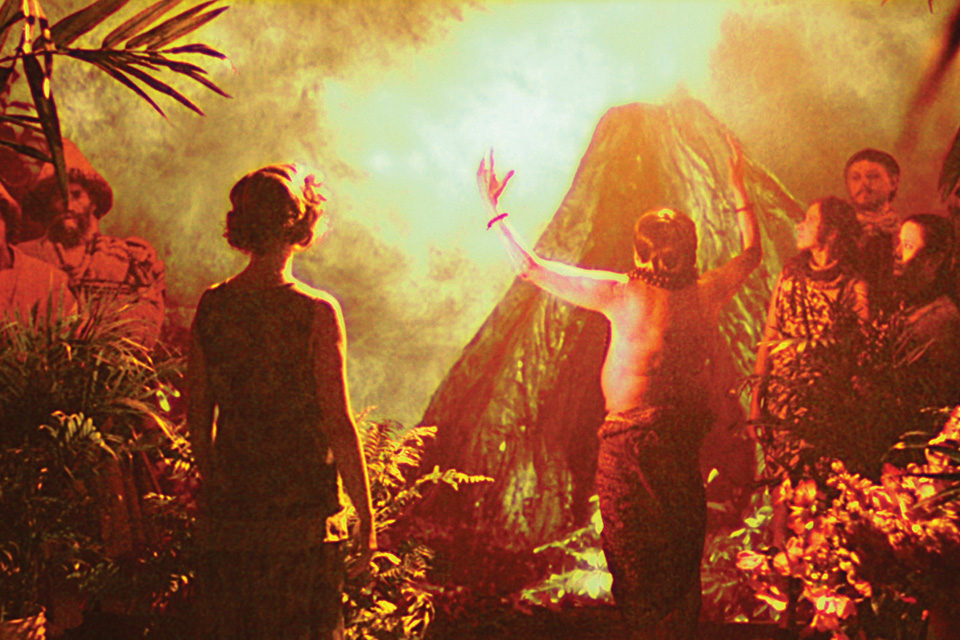
The Forbidden Room
Watching The Forbidden Room is like taking your drug of choice and speed-reading Geoffrey O’Brien’s critical-poetic evocation of cinema history The Phantom Empire—or like attending an all-night Maddin retrospective while that drug folds the whole experience in your mind into a single compressed rush. And for Maddin skeptics, or those who prefer his shorts because they feel the features sometimes stick around long after they’ve made their point, an accelerated anthology structure is an ideal way to take in the essence of his vision.
But there’s something new about the look of the film. Maddin has always captured the approximate feel of certain historic film styles, not with absolute precision but as someone who has absorbed so much vintage cinema that he doesn’t have to copy it like a forger. Individual shots may not exactly resemble Murnau, Borzage, or Tourneur, say, but in the rush of chiaroscuro images assembled by editor John Gurdebeke, Maddin, and DPs Stéphanie Weber Biron and Ben Kasulke capture something that resonates to those directors’ general timbre. Maddin doesn’t so much pastiche or re-create antique film styles, but rather—like a medium raising spirits of the dead—“channels” them, echoes of bygone film mannerisms rush by, constantly melting into each other before we can pigeonhole them.
I use the word “melt” advisedly—the film’s images literally look as if they’re burning in the crucible of some kind of alchemical reaction. Evan Johnson devised a postproduction technique for treating digitally shot images to suggest celluloid in a state of advanced distress and decay (after all, what is the SS Plunger’s volatile jelly but a version of the isotope combustibility of nitrate film?). Images frequently dissolve into each other; there’s an effect suggestive of turbulent bubbling, as if the movie itself were liquefying volcanically (often emphasized by hot red tinting). The Forbidden Room is a film in a constant state of febrile ebullition.
This effect is in keeping with the over-heated tenor peculiar to Maddin’s narratives, whether in the fantasies of incest, castration, and surgical malpractice in Cowards Bend the Knee, or the dream of ineffable emotional release sought in the international song contest of The Saddest Music in the World (03). Maddin has always used emotional excess to comic effect—his melodramas are invariably lurid or farcical. Yet this excess is to be taken seriously. In the press notes for The Forbidden Room, Maddin comments: “I’ve always defined melodrama as the truth uninhibited, liberated—not the truth exaggerated, as most people feel.” As anyone knows who has been won over by cinema’s more authentic, uncynical versions of camp irony—say, in Almodóvar or the Kuchars—what ostensibly seems to be a distancing effect can really be a detour that leads us back to feelings delivered more intensely than a immediate, “realistic” depiction of them might allow.
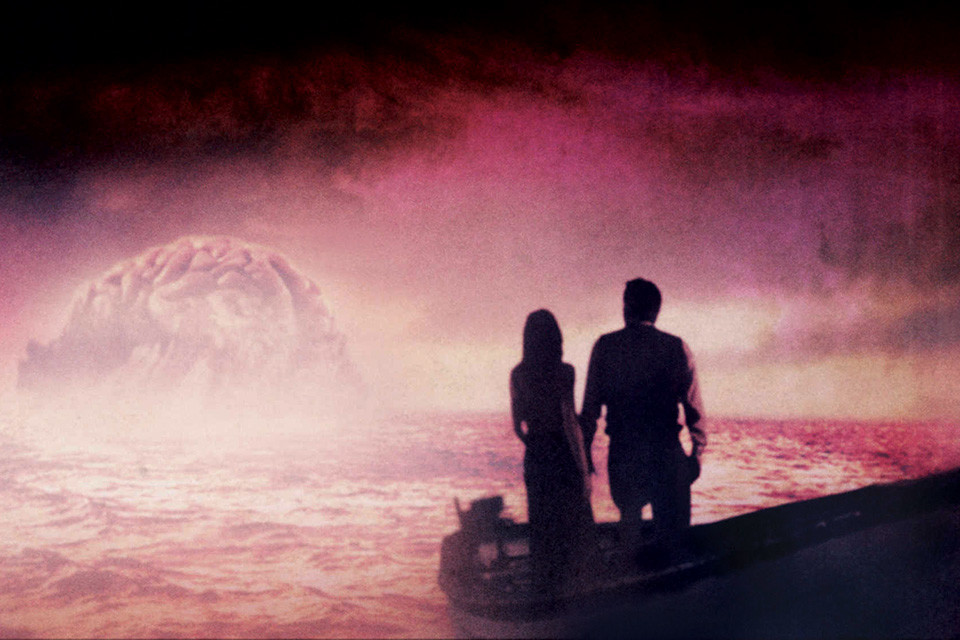
The Forbidden Room
The formal exuberance in The Forbidden Room—not to mention the deranged flipness of so much of it, from the bathing lesson to the supernatural talking bananas—shouldn’t blind us to the outpouring of emotion that the film also invokes. That emotion takes all sorts of forms: eerie apprehension of the uncanny and grotesque among Maddin’s reanimated cinematic “ghosts”; the erotic boiling-over of his characters’ ecstasies; and the kinetic intensity with which The Forbidden Room itself surges, shimmers, steams, a utopian hammam of cinematic possibility.
So enjoy your bath—but be warned, it’s hot!



